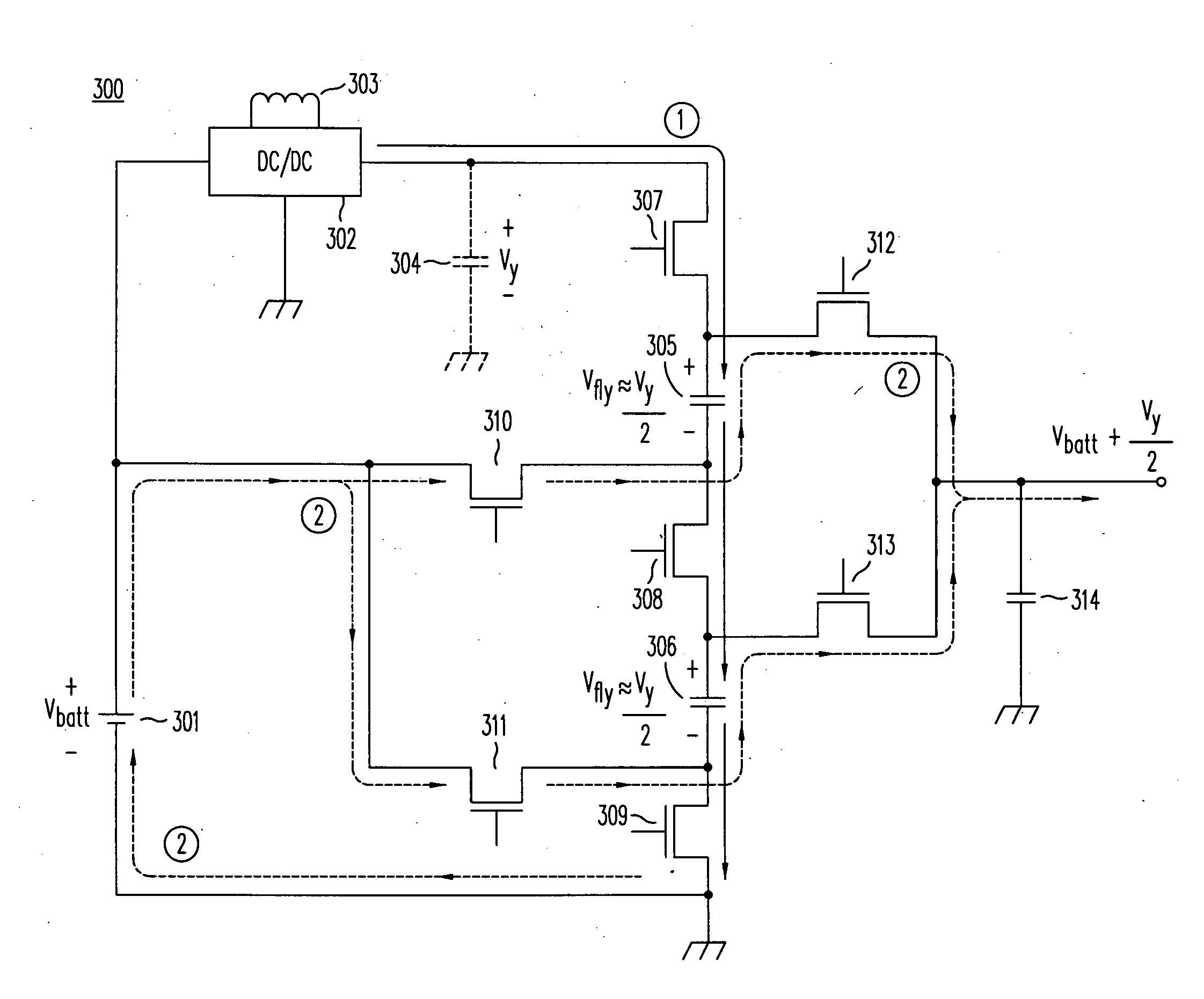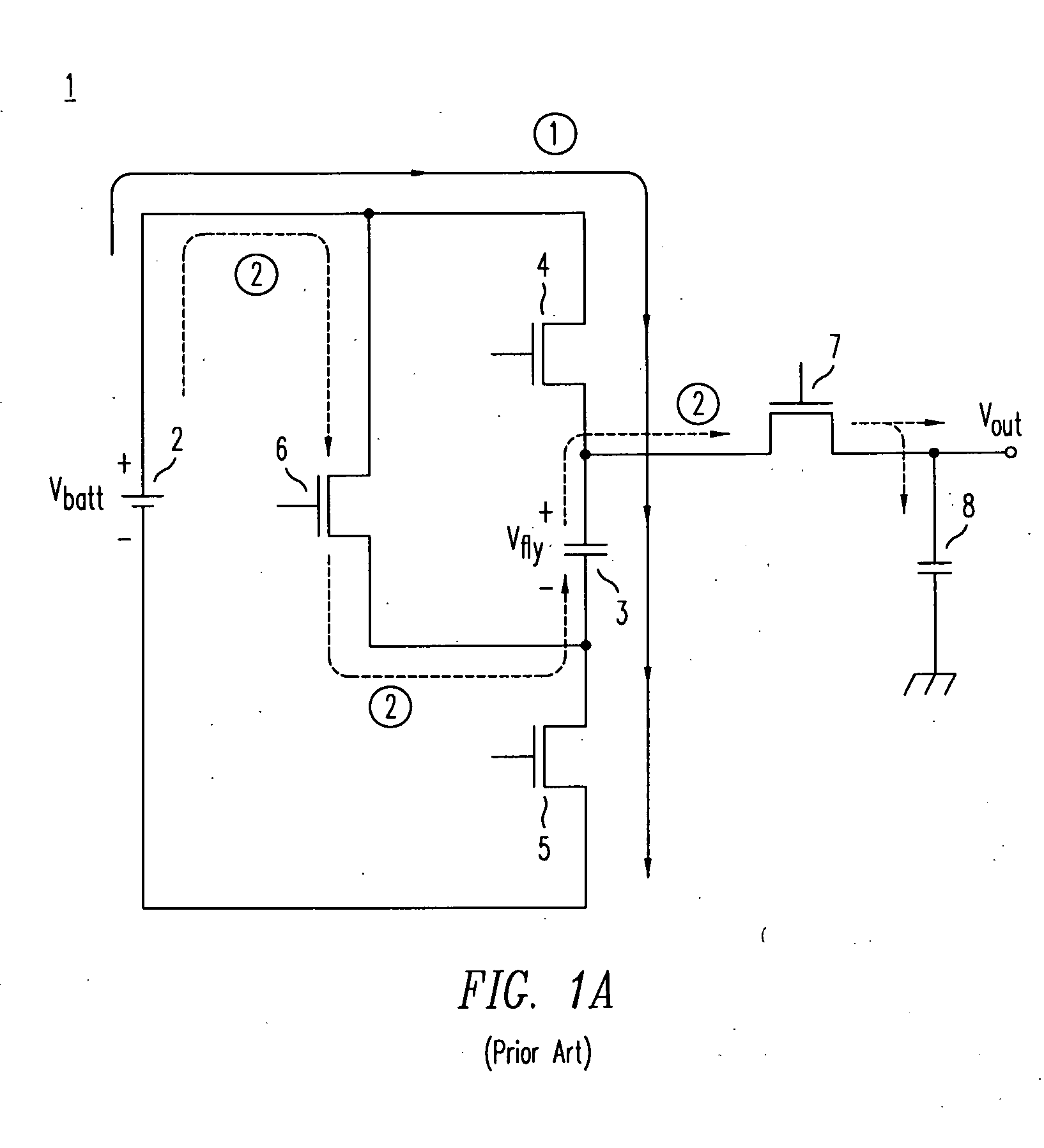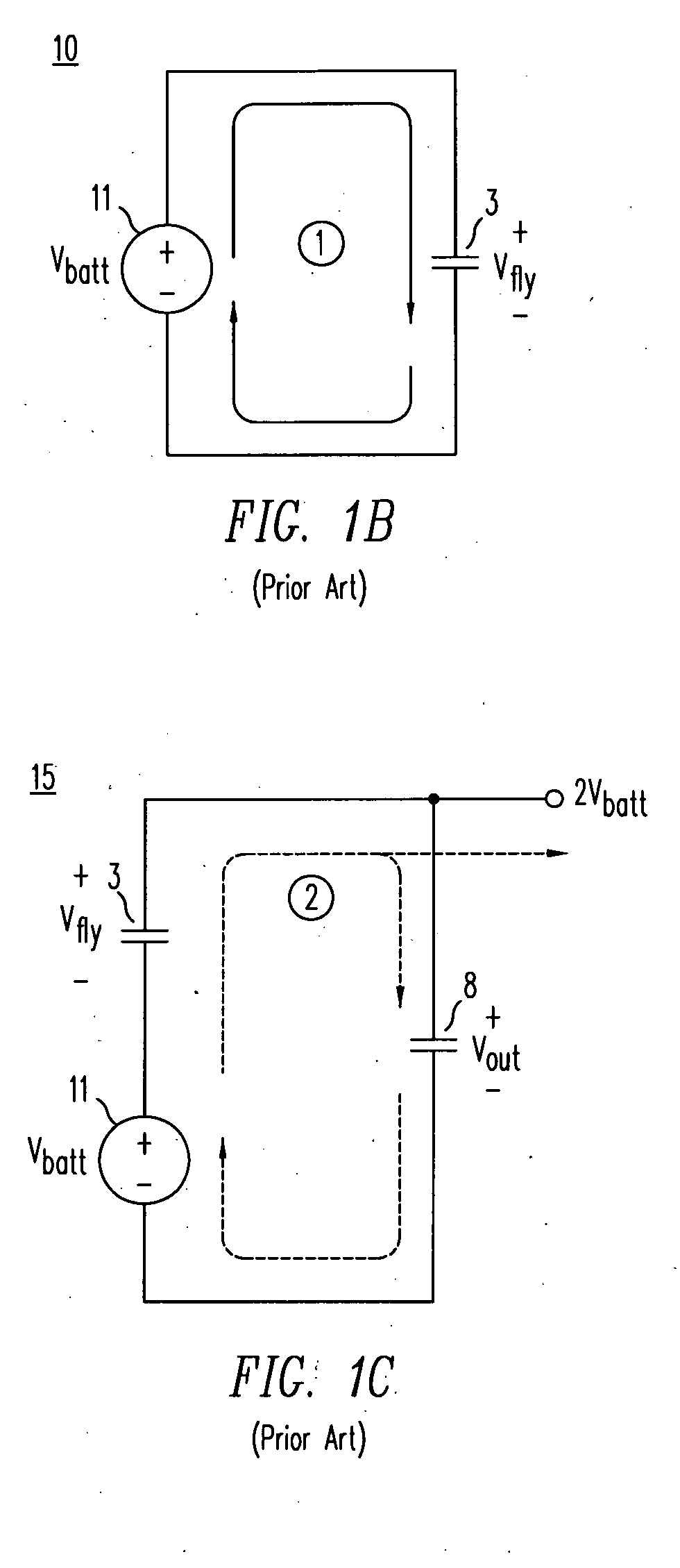Step-up DC/DC voltage converter with improved transient current capability
a voltage converter and transient current technology, applied in the direction of electric variable regulation, process and machine control, instruments, etc., can solve the problems of inductive switching regulators, capacitive charge-pump converters, linear regulators, etc., and achieve the difficulties of extremely narrow pulse widths of buck and boost converters, for exampl
- Summary
- Abstract
- Description
- Claims
- Application Information
AI Technical Summary
Benefits of technology
Problems solved by technology
Method used
Image
Examples
Embodiment Construction
[0063]A new family of high-efficiency DC-to-DC converters and switching regulators is disclosed in Applications Nos. 11 / 890,818, 11 / 890,941, 11 / 890,956, and 11 / 890,994, all of which were filed on Aug. 8, 2007, and all of which are incorporated herein by reference. These converters feature the capability of dynamic up-down conversion and large voltage conversion ratios without the complication of mode switching, instability, over a wide range of operating conditions.
[0064]The converters disclosed therein combine an inductive energy storage element, denoted by L, with one or more continuously-switched capacitive storage elements, denoted by C. In one embodiment, referred to herein as a class of LCXU converter, a two-stage voltage converter comprises an inductive switching pre-regulator followed by a capacitive voltage post-converter. The inductive pre-regulator may either step-up or step-down the input voltage. The capacitive post-converter steps up the voltage at its input terminal, ...
PUM
 Login to View More
Login to View More Abstract
Description
Claims
Application Information
 Login to View More
Login to View More - R&D
- Intellectual Property
- Life Sciences
- Materials
- Tech Scout
- Unparalleled Data Quality
- Higher Quality Content
- 60% Fewer Hallucinations
Browse by: Latest US Patents, China's latest patents, Technical Efficacy Thesaurus, Application Domain, Technology Topic, Popular Technical Reports.
© 2025 PatSnap. All rights reserved.Legal|Privacy policy|Modern Slavery Act Transparency Statement|Sitemap|About US| Contact US: help@patsnap.com



